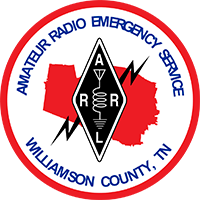Hunter, K3IE, did an overview of the radio, computer and software setup used to take part in a recent ARRL CW Sweepstakes.
A video of the presentation is here: https://www.youtube.com/watch?v=ngJ6_y5eBVQ
A Flex 6500 radio was used along with a number of software packages including SmartSDR, CWSkimmer, Slice Master and DAX:
- SmartSDR
- CWSkimmer is the software that takes the I/Q output from the radio and decodes the CW
- Slice Master 6000 which sits between SmartSDR and CWSkimmer (SDR Bridge is another option here)
Slice Master does a number of things but is primarily responsible for syncing the radio and CWSkimmer. This lets someone click on the CWSkimmer waterfall and have the radio automatically QSY to the frequency on which the user clicked. In the same way, a user can click on the SmartSDR panadapter and CWSkimmer will automatically scroll to that signal in its display. Slice Master is the “glue” that makes these two programs stay in sync when the user clicks either.
- DAX is Digital Audio Transport
It’s Flex software that creates virtual audio cables for the signals coming into and out of SmartSDR.
It does this by creating a virtual soundcard for the incoming, outgoing, and I/Q signals.
By having these signals show up on your PC as soundcards, you can use any off-the-shelf ham radio software and configure that software to use the DAX signals. So, in your ham radio software for digital modes like PSK-31, FT8, etc…. if you want to tell the software where to get the incoming audio for decoding, you’ll select the “soundcard” in your PC’s audio picklist called “DAX Audio RX 1”. And, to tell the software where to send the encoded audio for transmission over-the-air, you’ll pick the soundcard called “DAX Audio TX”.
- N1MM Logger+
N1MM is the gold-standard software used by contesters
